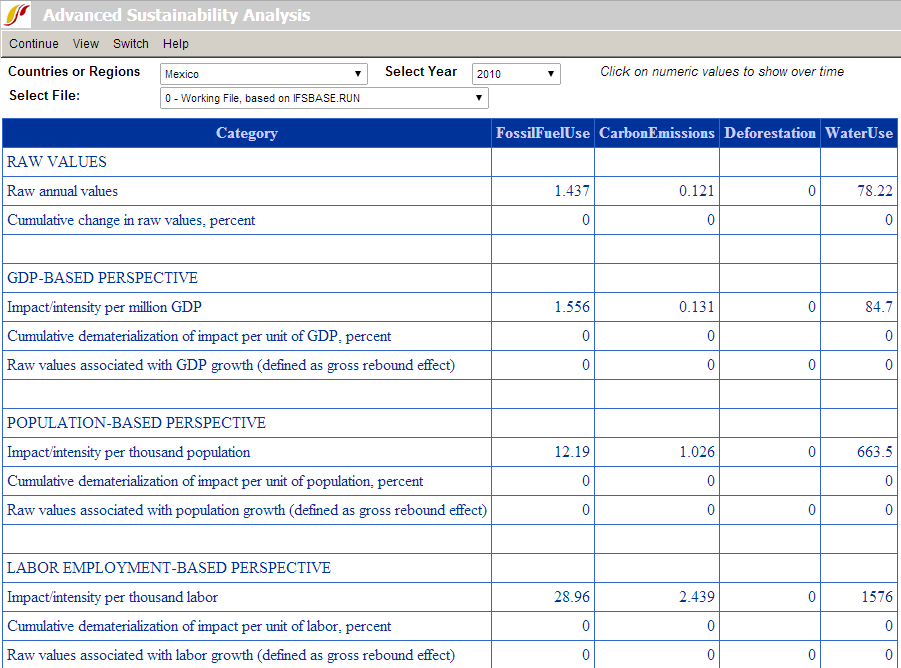Advanced Sustainability Analysis: Difference between revisions
Jump to navigation
Jump to search
No edit summary |
CamrynDreyer (talk | contribs) No edit summary |
||
| Line 1: | Line 1: | ||
Advanced Sustainability Analysis can be reached from the Display option on the Main Menu, under the Specialized Displays for Issues sub-option. It is also located under the [ | Advanced Sustainability Analysis can be reached from the Display option on the Main Menu, under the Specialized Displays for Issues sub-option. It is also located under the [[Main_Menu_Map_Pop-up|Main Menu Map Pop-up]] options. | ||
[[File:Useifs33.PNG|center]] | [[File:Useifs33.PNG|center|Useifs33.PNG]] | ||
The above matrix helps you understand the relationship between material inputs (such as fossil fuels and water) flowing into human systems and emissions coming from human systems (such as carbon dioxide), on the one hand, and size of GDP, population, and labor force on the other. It helps track whether ratios of inputs and outputs are increasing or decreasing relative to the size of human systems. | The above matrix helps you understand the relationship between material inputs (such as fossil fuels and water) flowing into human systems and emissions coming from human systems (such as carbon dioxide), on the one hand, and size of GDP, population, and labor force on the other. It helps track whether ratios of inputs and outputs are increasing or decreasing relative to the size of human systems. | ||
Revision as of 13:45, 19 July 2017
Advanced Sustainability Analysis can be reached from the Display option on the Main Menu, under the Specialized Displays for Issues sub-option. It is also located under the Main Menu Map Pop-up options.
The above matrix helps you understand the relationship between material inputs (such as fossil fuels and water) flowing into human systems and emissions coming from human systems (such as carbon dioxide), on the one hand, and size of GDP, population, and labor force on the other. It helps track whether ratios of inputs and outputs are increasing or decreasing relative to the size of human systems.
